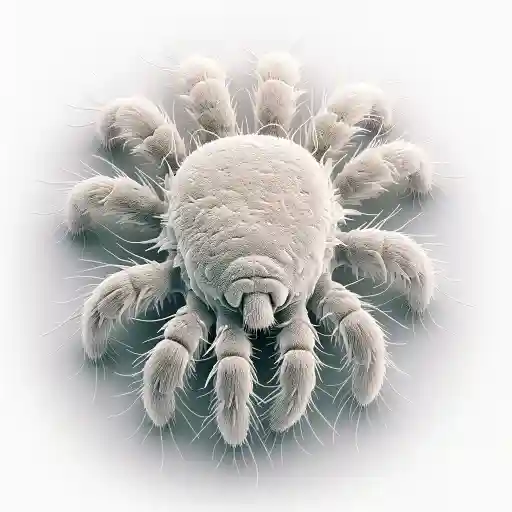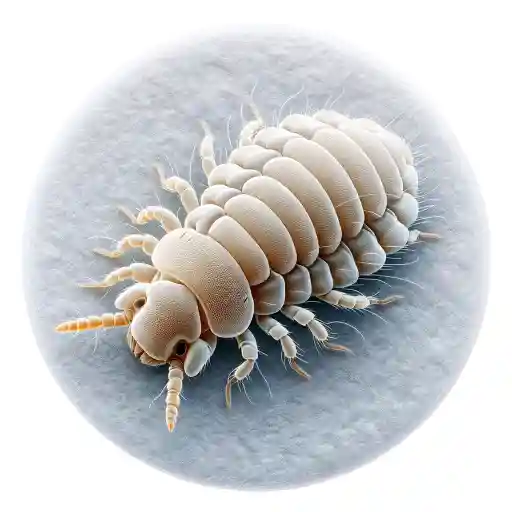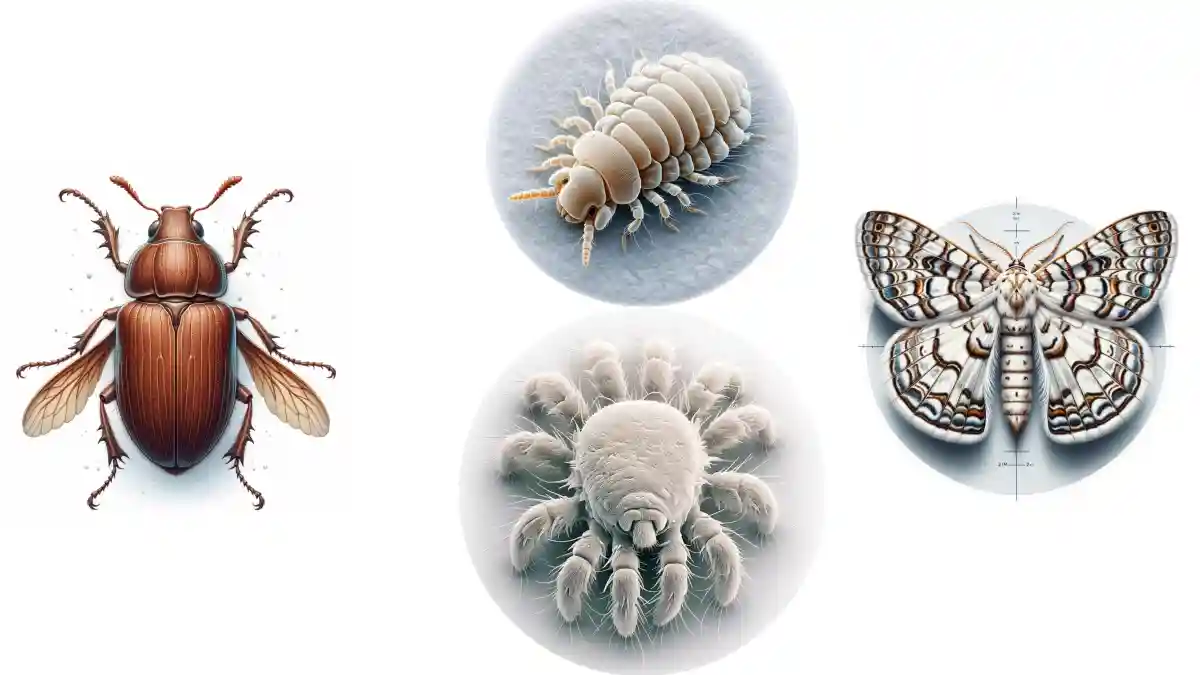Rice often attracts bugs if it’s not stored properly or if there’s moisture in your kitchen or home. These bugs might already be in the rice packets from the grocery store. A lot of time, you are likely to find rice weevils but what if it’s not weevils this time? What other bug could it be? So, if tiny bugs in rice not weevils, in this post, I’ll show you other 4 small bugs that you may be dealing with in your rice containers. You will also learn why these bugs target rice, their origins, and the safe methods you can use to eliminate them.
Tiny Bugs in Rice Not Weevils: What Are They?
Other than weevils, there are other bugs that are typical pantry pests that infest not only rice but also other foods such as flour, pasta, wheat, cereals, dried fruits, and various other food items. While these bugs are not harmful or toxic, their presence in your rice and other stored foods can lead to staleness. Let’s get to know each of these bugs.
1. Drugstore Beetles

If tiny bugs in rice not weevils, then they have to be drugstore beetles, another type of pantry pest that can cause damage to rice. These small beetles are brown and range in size from 1/10 to 1/7 inches. With an oval shape, six legs, and a pair of antennae on their head, drugstore beetles are easily recognizable. When viewed from above, their head appears to be hooked downwards.
These beetles are also known to consume flour of all types, which is why they are sometimes referred to as flour beetles. Drugstore beetles are capable of flying, thanks to their developed wings. They have a distinctive vertical pit that runs across their back, marking the gap between their wing pads. Additionally, their wing pads have a hairy cover.
Like many pantry beetles, drugstore beetles can be found in the rice and food packets that you purchase from stores. They are phototactic, meaning they are attracted to light. Thus, they may fly into your home, drawn by the light from light bulbs.
Drugstore beetles have a wide range of dietary preferences, including all types of stored food and grains. They are particularly notorious for consuming medicinal pills in pharmacies, which is how they earned their name. These beetles also feed on various other items like flour of all types, pet food, bread, sweet treats such as chocolate and cookies, spices, and rice grains.
Drugstore beetles lay eggs on them. An adult female drugstore beetle can lay around 100 eggs over 9 days on the food she infests. These eggs hatch within 8-10 days. The larvae that emerge from the eggs also feed on the stored food, leading to the accumulation of larval waste and cast skins.
It takes about 57 days for the larvae to mature into adults, after which they are ready to reproduce. Drugstore beetles do not bite humans or pets and are not known to transmit any diseases.
2. Flour Mites or Grain Mites

At number 2, we have grain mites, also known as flour mites. These are minuscule bugs that infest rice and various types of grains. When they invade flour, they are commonly referred to as flour mites.
These adult grain mites grow to a size of only about 0.017 inches, which makes them virtually invisible to the naked eye. However, you can notice them when they multiply in large numbers, as they create a layer that resembles white dust on your kitchen surfaces and food packets.
Grain mites don’t typically enter homes by crawling in from outside. If you find grain mites in your rice, it’s likely they were already present in the rice packet you purchased from the grocery store.
Grain mites may already be present in your kitchen, where they can easily spread to stored rice. They reproduce rapidly at normal room temperatures, especially in conditions of excessive moisture.
In large granaries and grocery stores, grain mites are a significant concern. They infest a variety of dry stored foods such as flour, rice, wheat, bread, cereals, pasta, oats, and some spices.
In rice and other stored foods, grain mites lay eggs. These eggs hatch within a week to ten days, and the resulting larvae take only about a week to mature into adults. This rapid life cycle means their population in your rice and kitchen can increase dramatically within just a couple of weeks. As a result, there’s an overflow of grain mites onto your kitchen shelves, pantry, and storage areas.
Excessive grain mites create a visible whitish layer of dust on food packets, storage jars, and kitchen surfaces like shelves and counters. While grain mites don’t directly contaminate rice, flour, or other stored foods, these items develop a minty odor when infested. Also, rice and flour may acquire a yellowish tint, indicating that grain mites have caused them to become stale.
3. Rice Moth and Rice Moth Larvae

Tiny bugs in rice not weevils? If so, you might be dealing with rice moths, commonly known as Indian meal moths. These are small moths that infiltrate homes to feed on rice and other stored foods, as well as lay eggs on them. These moths are typical pantry pests, always looking for openings in food storage containers to sneak in and lay their eggs.
Adult rice moths consume rice and lay their eggs in the rice stored in your jars. These adult moths can grow up to 3/8 inches in size. They have an oval and elongated body with fully developed wing pads that cover their entire abdomen. The first half of their wings, near the head, is gray, while the latter half has a rusty bronze color.
Rice moths have a varied diet and don’t exclusively target rice. They can also infest other foods such as flour, dried fruits, corn, bread, and even pet food.
Rice moths have a high capacity for laying eggs in the foods they consume. These moths become active and start breeding in late spring. During this time, they commonly fly into homes through open doors and windows. Like many moths, rice moths are drawn to light, making them likely to follow light sources into your home. Rice moths are a frequent issue in granaries and large grocery stores due to their prolific egg-laying.
These moths can chew through plastic, paper, and even thin cardboard packaging to reach the food and lay their eggs. A single rice moth can lay up to 300 eggs for 18 days on stored food!
The eggs hatch within two weeks, and the rice moth larvae take about two months to mature into adults. During these two months, the larvae feed on the rice, leaving behind droppings, and undergo pupation before transforming into adults.
Rice moth larvae appear as tiny, white, legless worms with a brown head resembling a dot at the tip. The damage they cause is evident in clumped rice grains or flour, a dusty layer on the grains, and a slight odor.
Rice moths do not bite humans or pets and are generally harmless. They are often confused with cloth moths, but they differ significantly in appearance and behavior. Cloth moths lay eggs on fabrics and clothes, and their larvae feed on natural fibers such as wool, silk, and fur.
4. Booklice or Psocids Mites Found in Rice

Booklice, also known as psocids mites, are tiny bugs with a brownish-white color. They feed on molds and fungi that grow on hard surfaces. These bugs come into homes from outside, where their natural habitat includes under tree barks, on leaves, in shrubs and bushes, and beneath stones and firewood stacks.
Booklice are also commonly called bark lice because they are often found under tree bark. They are small, only growing about 1 mm or 1/16th of an inch to 2.5 mm or 4/25th of an inch in size. They can be brown or sometimes white and have an oval body with a noticeable abdomen. This body shape might make you mistake psocids mites in your bed for bed bugs.
However, booklice do not bite humans or pets, nor do they transmit any diseases.
Booklice thrive in moist environments and feed on mildew that forms on wooden and hard surfaces due to dampness. When the outdoor weather becomes excessively hot or dry, booklice seek new sources of moisture and food for survival, often leading them to invade homes. During the summer months, you might spot booklice on windowsills, attempting to enter through small gaps.
Once inside, booklice gravitate towards damp areas such as kitchens, bathrooms, and laundry rooms, searching for mold. High moisture levels in your kitchen can also affect your kitchen pantry. If rice is not stored correctly in airtight containers, moisture can penetrate these jars, causing the rice grains to become damp. This dampness leads to the formation of molds and fungi on the rice, making it an ideal environment for booklice.
Booklice can easily infest your rice because their body shape closely resembles rice grains, making them hard to detect. Particularly when they are brown, booklice can blend in seamlessly with brown rice grains, effectively camouflaging themselves.
Booklice feed on the molds that grow on rice grains, but they do not actually consume the rice itself. However, they do lay eggs in the rice jars, leading to the emergence of booklice larvae. As these larvae grow into adults, they multiply and spread.
This proliferation is why you might find booklice not just in the rice jar but all over your kitchen counter, shelves, and cupboards. Furthermore, booklice can spread to other areas of your home, making them a prevalent pest in households with moisture issues.
Molds can develop on walls, bed frames, books, and even fabrics, attracting booklice to these items. While booklice are not microscopic, they are still small enough to be noticeable. When you open a rice jar infested with booklice, you can see these tiny bugs that resemble bed bugs crawling around the rice.
How to Get Rid of Rice Bugs in Rice
Here are 6 steps to help you get rid of tiny bugs in rice:
1. Control Moisture in Your Home and Kitchen
Moisture is a major attractant for bugs like booklice and rice weevils, among others. Often, excessive moisture in homes and kitchens is due to leaking pipes. Start by inspecting the plumbing under your kitchen sink, as leaks are common in this area.
Leaky pipes can lead to walls absorbing water, which encourages mold growth. If these leaks continue, they can spread to your kitchen floor, pantry, and storage areas, creating an ideal environment for pests like psocid mites and rice weevils. Additionally, address any leaking pipes near your home’s foundation, basement, and bathroom. These leaks can significantly increase overall dampness in your home, leading to damage such as cracks in walls and floors. These cracks can then serve as entry points and hiding places for various bugs and pests.
2. Inspect Rice Packets for Signs of Infestation
Before purchasing rice or other food packets, it’s important to look for signs of bug or beetle infestation, even though you can’t open the packaging in the store. One key indicator is a dusty layer on the surface of the packets. This can be a sign of grain mites, as they often spill over from the food and leave a dusty, sandy residue on the packet’s surface. If you notice this, it’s best to avoid buying those food packets or grain bags to prevent bringing grain mites into your home.
3. Check The Rice Before Storing It
Once you bring rice home, don’t immediately store it in the pantry. First, open the rice bag and pour the rice into a jar or bowl to inspect it. Look for any weevils, moths, or mites. If you find any bugs, you have two options:
- Freeze the rice because rice bugs cannot survive in cold environments.
- Place the rice under direct sunlight to expel the tiny rice bugs.
4. Install Window Screens to Prevent Insect Entry
Rice bugs can enter your home not only through infested food packets but also through open windows.
Moths and beetles, particularly active during the spring and summer months, often fly into homes through these openings. These insects are typically attracted to light sources within your home. So, install window screens with fine mesh on your home’s windows, particularly those in the kitchen. Choose window screens with a mesh size of less than 6 inches. It will stop pantry moths and beetles and keep out a variety of other flying bugs that become more active in the warmer seasons.
5. Keep Your Kitchen Clean to Ward Off Pests
Of course, cleanliness in both your kitchen and home can keep away all types of bugs, including rice bugs and other pantry pests. Leftover food and spills in the kitchen pantry can attract these pests. Moreover, food stains and crumbs on kitchen counters, storage areas, and floors serve as food sources for insects like ants and roaches. Therefore, it’s important to keep your kitchen spotlessly clean.
Regularly use a vacuum cleaner to remove any food or grain spillages from your kitchen shelves and cabinets. You can also wipe food stains from kitchen countertops and shelves with disinfectant or kitchen cleaner with a lemon scent. And most importantly, don’t accumulate food waste in your kitchen sink and trash bins. The odor emanating from decaying food waste can attract pests like ants and roaches to your kitchen.
6. Proper Storage of Rice and Dry Foods to Prevent Bug Infestation
In the course of keeping tiny rice bugs at bay, I have found that proper storage can prevent infestations. These pests, including rice moths, weevils, and drugstore beetles, can chew through the thin plastic of weaker food storage jars. So, you have to use robust, airtight containers for storage in your kitchen pantry. Always make sure to tightly close the lids of these food storage jars to prevent pests from entering.
Conclusion—Tiny Bugs in Rice Not Weevils
So, the most frequently encountered tiny bugs in rice that are not weevils are grain mites, rice moths, drugstore beetles, and lice. If you have difficulty getting rid of them, consider calling your local pest control expert.
Read also: Weevils in Bathroom [What to Do]






